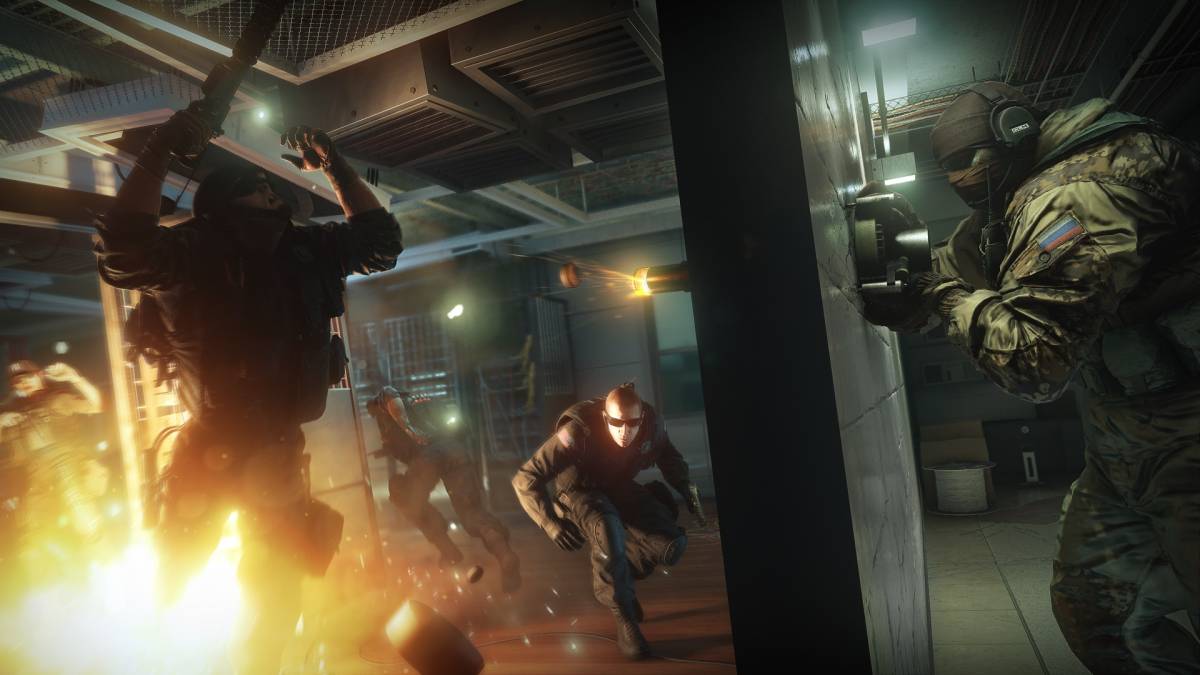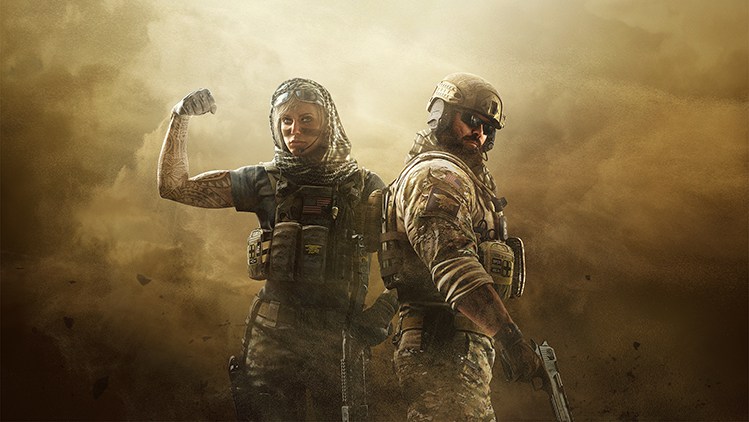On December 1st, 2015, Ubisoft dropped their entry into the competitive FPS scene with Tom Clancy’s Rainbow Six Siege, and ever since the game has had a bit of a rollercoaster of a player base. Currently, Ubisoft has provided an (admittedly vague) chart revealing the popularity of the game over time. As someone who has been with the game since day one, I’d like to try and make sense of the numbers and understand just how Siege managed to pull such a late success.
Back before the first title update, Siege sat comfortably at about 50% of its current daily users with a very noticeable spike in interest in late December/early January. Less than a month after release the game spiked to about 80% of its current player base. A couple of things could have led to this sudden 30% increase, such as the waning popularity of Star Wars Battlefront, a game which released only two weeks prior to Siege, or even the announcement of Operation Black Ice, the Year One roadmap, and the fact that all DLC would be available in-game and not locked behind any kind of paywall, never dividing the player base. Even when Black Ice got delayed to February it didn’t put a dent in the numbers.

After Operation Black Ice finally dropped on February 2nd, rather than increasing, the numbers actually started to decline. The DLC reached almost 60% of the current user base at its best while at their worst they tied at 40% for the number of players who first picked up the game in early December. A couple of things were very noticeably wrong with the title update such as a black screen bug when you picked shield wielding operators, frequent game crashes, and the sudden rise in cheating users that FairFight, the anti-cheat system in place at the time, simply was not catching. On top of it all, the map that came with Black Ice, Yacht, is considered one of the worst maps in the game, with players citing its massive size and the amount of non-destructible walls working counter to the very core and spirit of Siege. With bugs, freezes, a map that wasn’t much fun, and abusive users running rampant the numbers were dwindling quickly in Season 1.
May 10th would mark the release date of Operation Dust Line, the second major update for Siege. With Dust Line came new customization features, a winning team showcase that gave the match victors an action movie hero pose at the end of every game, a new map named Border which was relatively well received, and some very powerful new operators. Too powerful, in fact, as since their release both of them have been hit with significant nerfs. While Dust Line certainly was a massive step in the right direction with meta-changing operators, a solid map, massive bug fixes, and even giving some character to the game, it still wasn’t holding numbers past the initial release spike that came with the new season. The player base dropped again back to 70% of its current users.

General complaints at the time were that Blackbeard, the new attacking operator, was way too powerful. Other major issues also included shotguns being way too damaging, even at range, and a day 1 operator named Pulse who got a “quality of life” change. Pulse’s changes made him strong, but a bug which allowed him to quick-swap from gadget to overpowered shotgun in seconds made him an absolute demon in game. While Blackbeard and Pulse exploiters certainly did their fair share of driving players away, cheaters were still running wild in Siege with no end in sight and that could not have done any favors to the games popularity.
Season 3 came to Siege on August 2nd and while the operators and map came with mixed reviews, the real star of the update was the new anti-cheat system BattlEye. BattlEye came with a ton of fanfare when it launched with users who were sniffed out and banned by the system having their player IDs listed in a feed at the top right of every player’s screen with the message “has left the game.” (the system later updated to the more accurate message “Has been banned by BattlEye” but everyone knew what it meant at the time.) It was like confetti raining down in celebration that honest players could finally enjoy the game they’ve been struggling to take on for the last 8 months. The new anti-cheat was so well received and celebrated that some Redditors actually tried to maintain a list of every ban, but couldn’t keep up with the reported 3,800 users kicked in just the first wave.
Even with nearly four-thousand users getting removed from the game, the player base actually skyrocketed at the release of Skull Rain. While the chart does not follow-up beyond August, reports are that even the widely considered king of FPS Call of Duty is struggling to compete with Rainbow Six as Infinite Warfare releases with a record low in pre-order sales and some of the worst player base numbers for a CoD game in recent years. Now with the fourth and final major update for Siege coming November 17th titled Operation Red Crow, it will be interesting to see if the player base spikes again and if Ubisoft openly releases those numbers, a move that EA has been reluctant to do regarding Star Wars Battlefront, despite their assurance that online player counters are inaccurate.
It feels like the success of Siege and the poor reception of Infinite Warfare and Battlefront are marking the end of annual release shooters with developers and players alike concluding that games built to last with dev support running the distance is the best way to go about keeping a consistent growth without dividing the players. Only time will tell if this way of thinking gains ground and has any impact on the gaming industry at large.
Some of the coverage you find on Cultured Vultures contains affiliate links, which provide us with small commissions based on purchases made from visiting our site. We cover gaming news, movie reviews, wrestling and much more.



